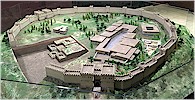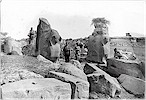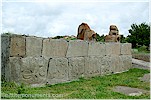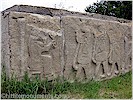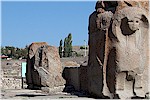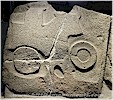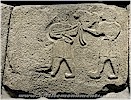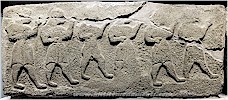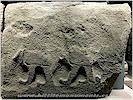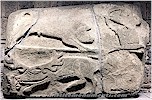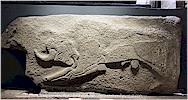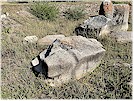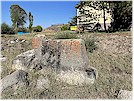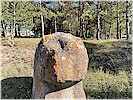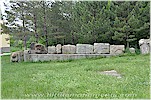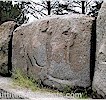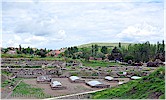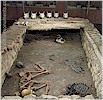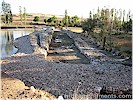Türkçe
Alacahöyük
Alacahöyük (also Alaca Höyük) is located 36 km to the northeast of the Hattusa (Boğazköy) in north central Turkey in the Çorum province. Although brief excavations were carried out in 1893-94 and 1907, proper excavations started in 1935 by the Turkish Historical Association under Remzi Oğuz Arık, and after 1936 continued under Hamit Zübeyr Koşay intermittently until 1970. More recently, between 1997 and 2018 the work at the site was conducted by a team from Ankara University under Aykut Çınaroğlu.
Excavations reveal that the site must have been an important settlement already in pre-Hittite times. Among the most important finds of the location are the richly decorated pre-Hittite period royal tombs dating from the 3rd millennium BCE. Alacahöyük's Hittite period name remains undetermined, but most scholars suspect it to be Arinna, the city of the Hittite Sun-Goddess, and a few others equate it with Zippalanda. Both cities are known from Hittite texts as major cult centers in close proximity to Hattusa.
Almost all of the standing stone monuments like sphinxes are orthostats are from the Hittite period. The town walls with their carved orthostats have inner and outer gateways with ramps for archers. The southern outer monumental gateway was set between two towers and guarded by two great sphinxes. In the doorjambs are two 13 foot high monoliths which were carved to create 7 foot high sphinxes. Inside this Sphinx Gate was a large Hittite building complex that is still being investigated. The bases of the two towers by the Sphinx Gate are decorated with several orthostats. Although previously earlier dates were suggested, the gate complex probably dates to the 13th century BCE. The sphinxes and the orthostats that were found in situ have been replaced with replicas and moved to the Anatolian Civilizations Museum in Ankara. Some of the orthostat that were found fallen, originally formed a second row on the gate walls above the current line of orthostats. Some other orthostats and statue fragments remain at the site.
Click on the pictures for larger images.
Genel görünüm
The South Gate (Sphinx Gate)
South Gate Orthostats, Anatolian Civilizations Museum
Portal lions
Unfinished portal lions near the South Gate
Other orthostat and statue fragments
The West Gate and the postern tunnel
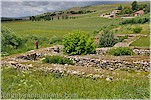




The royal tombs of the third millennium BCE
Alacahöyük Hittite Dam
Also known as Gölpınar Dam, it is probably one of over 10 dams that were built by Tudhaliya IV around 1240 BCE as it is stated in the Hittite documents. The dam was restored in 2002 and holds about 15,000 cubic meters of water. A stele base and a fragment of a round-top stele with hieroglyphic inscription which mentions the goddess Hebat have been found during the cleanup process. However, as of 2021 the dam is covered with vegetation and appears highly neglected.
Religious standards from the royal tombs
Some of the most important findings of Alacahöyük were the cult objects found in the royal tombs of pre-Hittite times from the late 3rd millennium BCE. They are in the shape of sun discs or animals that probably represented gods. They are often found as grave gifts and must have been carried in funeral processions as religious symbols. Many of these items are on display in the Anatolian Civilization Museum in Ankara. A few of the items below come from surrounding regions near Alacahöyük.

